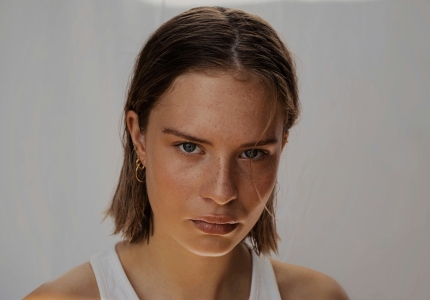As a beginner, yoga poses might seem intimidating, but don’t be alarmed! Yoga is an ancient form of physical and spiritual exercise practiced by millions of people with all kinds of body shapes, sizes and flexibility levels. It’s for everybody and has a wide range benefits!
Yoga is about experiencing how your body moves. It’s all about discovering how your body feels and listening to its messages about what it needs.
Because you’re just starting to learn how to listen in this way, you don’t need to get into complex poses. They might even be distracting or, worse, push you further than you are ready to go. No matter what your teacher or colleagues are doing, always stop when your body tells you to. Your body knows the difference between a good stretch and painful pull down to the millimeter and exactly when the right moment is for you.
Here are some poses to start with. They are simple positions, so you can relax and focus on becoming aware of your physical and mental self. Your job is to be in the moment and to bring your mind back to here and now every time it wanders. If you need some help to keep calm and relax your body and mind we recommend you to come to one of our AIRE Ancient Baths and discover us. You will repeat!
Tadasana (mountain pose):
The first pose is a standing position that is a basis or starting point for many other poses. Without needing to move, your body is a stable source of strength.
Stand with your feet parallel at hip-width apart and arms hanging down gently at your sides. Tuck your pelvis forward and under slightly. What did that feel like? Scan your muscles for any tension and allow them to release it. Feel your body rising up from your feet, which are firmly rooted in the ground, through the support of your legs, trunk and long neck. Let your breath sweep in and out of you.
Dandasana (staff pose):
Sit on the floor with your legs together stretched out in front of you. If this is uncomfortable, you can sit on some blankets. Roll your legs toward each other so that your toes and knees face upwards. Gently straighten and stretch your legs as your fingertips or palms embrace the floor straight down beside you at your hips. Breathe and think about your spine as a straight line: you are suspended from a point at the top of your head, and the rest of your body falls into place.
How do your legs feel? Where do they tell you to stop stretching or straightening? Does that point change over time? Are you developing tension in your neck, shoulders or upper body over time? If so, how could you release that tension?
Biralasana (cat pose):
On your hands and knees, nod your head until it reaches a point where your neck is in line with your spine, neither tucked in nor looking up, but long and straight. Your knees are at hip-width and your hands are just in front of your shoulders.
From this neutral back position, inhale as your raise your tailbone and your head and lower your back, creating a U-shaped curve. Hold the position and your breath for a few seconds. Then go back to neutral. Next, exhale and round your back to create an inverted-U-shaped curve with your tailbone and head each slightly and gently tucked in. Hold for a few seconds and return to neutral again as you begin to inhale.
This pose is dynamic, but don’t move too quickly from position to position. The point is to pay attention to how your body feels in each position as it flows from one to the next. Allow yourself to relax into each stretch and remember to breathe with each movement.
Savasana (corpse pose):
Lie on your back with your legs stretched out in a line down your body and your arms slightly away from your sides so that the backs of your hands are resting on the floor. Close your eyes.
Now, pay attention to your breath. Does your chest move? Does your stomach move? Do your sides move? How do your hips feel? How does your back feel? Your legs? Let your muscles react and notice how they do, in what order.
This is a common relaxation pose to end a session, but your mind remains just as present.
There is no rush to yoga. The amount of time you spend in each pose is immaterial and which poses you do are unimportant in and of themselves. The important part is that you took the time to practice just being in and listening to your body.



